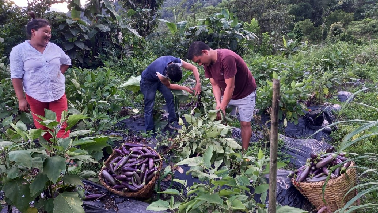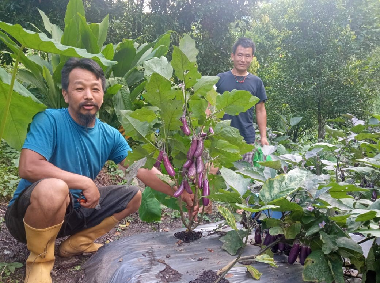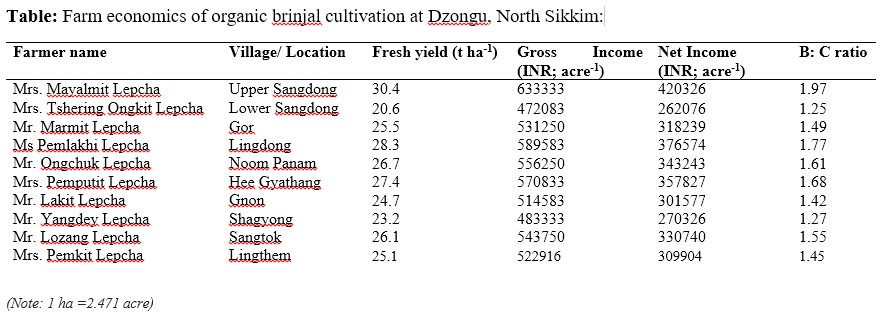In the Sikkim Himalaya, the Lepcha tribes have traditionally practiced organic farming in subsistence mixed-cropping systems to meet household needs. However, the hilly terrain and poor connectivity often restricted their access to markets, limiting economic returns from seasonal vegetable production. Frequent pest outbreaks in the high-rainfall, humid environment further compounded crop losses, with brinjal shoot and fruit borer (Leucinodes orbonalis) causing yield reductions of over 80% during the rainy season. Limited access to organic pest control solutions and reluctance to adopt modern crop protection practices posed additional challenges.

Recognizing this constraint, ICAR-Research Complex for NEH Region, Sikkim Centre, initiated field demonstrations in 2022 under the Tribal Sub-Plan (TSP). The program introduced open-pollinated, moderately tolerant brinjal varieties Pusa Purple Long (tolerant to shoot and fruit borer) and Pusa Purple Cluster (tolerant to bacterial wilt) to 136 tribal Lepcha farmers across four Gram Panchayat Units of Lower Dzongu: Lingdong-Barfok, Hee-Gyathang, Gnon-Sangdong, and Lum Gor Sangtok.

Farmers followed a package of organic practices including basal application of vermicompost (0.6–0.8 t/acre), mulching for weed suppression and soil conservation, and foliar sprays of seaweed extract (IFFCO-Sagarika). The crop was ready for harvest within 75–90 days, with 4–7 pickings extending until mid-October. Brinjal fetched a market price of ₹50–60 per kg in Mangan, ensuring attractive returns.

Impact and Outcomes:
•Marketable yields ranged from 20.6–30.4 t/ha during the kharif season.
•Yield advantages of 18.6%–28.9% were recorded over local varieties due to pest tolerance.
•Benefit–Cost ratio ranged between 1.25 and 1.97, even with negligible investment in plant protection.
•A steady supply chain of organic brinjal was established for the Mangan market and even extended to alternate buyers such as the Indian Army camp at Lachen.

Farmers’ Success Stories:
•Mrs. Mayalmit Lepcha of Sangdong village harvested 446 kg brinjal (Pusa Purple Long) from just 171 m² of homestead land.
•Her neighbor, Mrs. Tshering Ongkit Lepcha, produced 376 kg brinjal (Pusa Purple Cluster) on 183 m², supplying fresh produce regularly to Mangan market.
•Mrs. Pemlakhi Lepcha from Lingdong village secured bumper harvests and tapped into the Lachen Army camp market, ensuring higher profitability.

The demonstrated profitability and reliability of organic brinjal cultivation motivated neighboring farmers to expand the cultivated area under brinjal. The initiative not only enhanced household incomes but also strengthened livelihood security of tribal Lepcha communities in Dzongu.

Through adoption of suitable tolerant cultivars and simple organic practices, brinjal farming has emerged as a viable pathway to economic empowerment and nutritional security for tribal households in North Sikkim under the ICAR-TSP program.
(Source: ICAR-Research Complex for NEH Region, Sikkim Center, Tadong)








Like on Facebook
Subscribe on Youtube
Follow on X X
Like on instagram